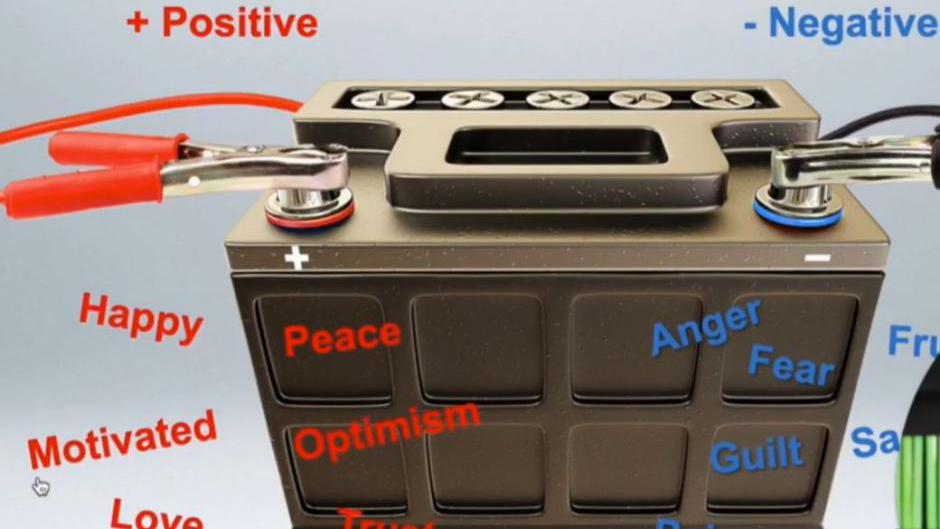Teach Resilience
Resilience Can Be Taught: Ways to Motivate Any Student
By Diane James, SREB
 During the prolonged pandemic, teachers have encountered students who have experienced a broad array of traumatic experiences — the illness or death of a loved one, family job loss, physical or mental abuse, acts of violence and even imprisonment.
During the prolonged pandemic, teachers have encountered students who have experienced a broad array of traumatic experiences — the illness or death of a loved one, family job loss, physical or mental abuse, acts of violence and even imprisonment.
Such experiences hurt students’ learning and behavior, but according to Christian Moore, a licensed clinical social worker and the author of The Resilience Breakthrough, teachers can inspire and build resilience in students who have experienced trauma. It all begins by teaching valuable social-emotional life skills in ways that students can understand and relate to.
 Moore describes resilience as the ability to bounce back. The thing that can trigger resilience — the thing all teachers wish they could prevent — is suffering. Suffering gives individuals something to bounce back from, Moore says.
Moore describes resilience as the ability to bounce back. The thing that can trigger resilience — the thing all teachers wish they could prevent — is suffering. Suffering gives individuals something to bounce back from, Moore says.
Teachers can help students recognize their suffering and “use pain as a fuel source, as their best friend,” says Moore. When suffering kicks in, people have a lot of emotional energy, he says — some of that energy will be positive, and some will be negative. Moore advocates using visual metaphors as tools to relate to students and drive home strategies. Teachers can help students tap into all of their emotions, maximizing the negative energy — whether that comes from hurt, anger, fear or depression — to create a positive outcome.
For example, Moore says that as a student, he was diagnosed with ADHD, a conduct disorder and learning disabilities. Told he would never graduate or go to college, Moore was so angered he wanted to prove his naysayers wrong. He not only went to college but graduated with a master’s degree. “When I look at people who had high trauma but were highflyers, they all used negative emotions in productive ways, Moore maintains.
Four Sources of Resilience
Digging deep and turning negative emotions into positive outcomes is easier said than done. Students need motivation. Moore offers four sources of resilience that motivate individuals to channel suffering and negative emotions into positive gains:
- Relationship Resilience: Your greatest motivation to not give up is the knowledge that others need you and you need them. “Human beings are motivated by other human beings,” stresses Moore.
- Street Resilience: When you have every reason to give up, you take the pain of disrespect, social inequality or other barriers and use them as fuel to propel yourself forward.
- Resource Resilience: Your resilience can be increased when you tap into the resources available to you — your talents, relationships, physical assets or unique capabilities.
- Rock Bottom Resilience: When you’re at your lowest point, believe in your ability to change your circumstances. Combat hopelessness and fight on! “Losing in the past does not mean you will lose in the future,” insists Moore.
Moore is also adamant that “resilience takes place in the striving” and has nothing to do with “success.”
Lessons That Can Help Students Experiencing Trauma to Succeed in School
Like each of us, students have different stressors and triggers that can hijack their ability to focus and learn. But teachers can help students develop healthy coping skills and recognize the obstacles that may be holding them back.
Moore cites three “basics” that help students power through obstacles and succeed in school.
- Stop crashing. Realize that your decisions have consequences.
- Tear off the labels or names that people call you, such as failure, dumb, gang member or druggie.
- Recognize — and control — your personal defense mechanisms: Find constructive ways to respond when disrespected, embarrassed, hit, blamed or pressured.
Engaging Students With Visual Metaphors, Videos and Music
To engage students in ways they can understand, relate and remember, Moore suggests teachers use metaphors, pictures and music because many students are visual learners, and research indicates listening to music is their number one non-school-related activity. “They love that you’re willing to go into their world. It’s powerful to bring the classroom to life with music,” but he does caution that teachers need to set ground rules on the kind of music and lyrics allowed in class.
Contact: Christian Moore, aly@whytry.org
Learn with Christian Moore at #SREBSummer! Don’t miss his featured session, Resilience Can Be Taught: Four Strategies to Build Resilience in Every Student, on Wednesday, Jul 20, 2022, at 10 a.m. Central. Register now.
This article was featured in the March 2022 issue of SREB School Improvement’s Promising Practices Newsletter.

